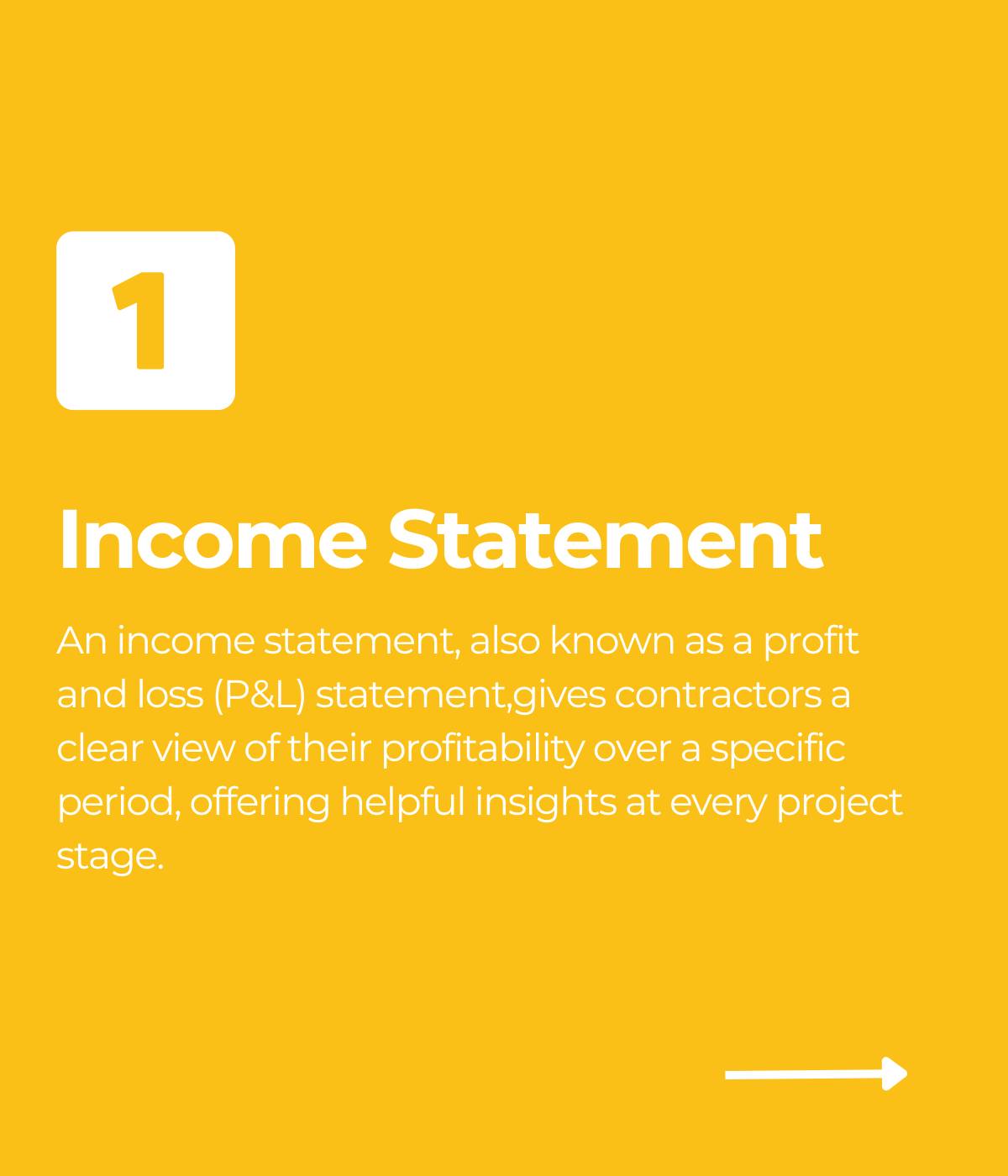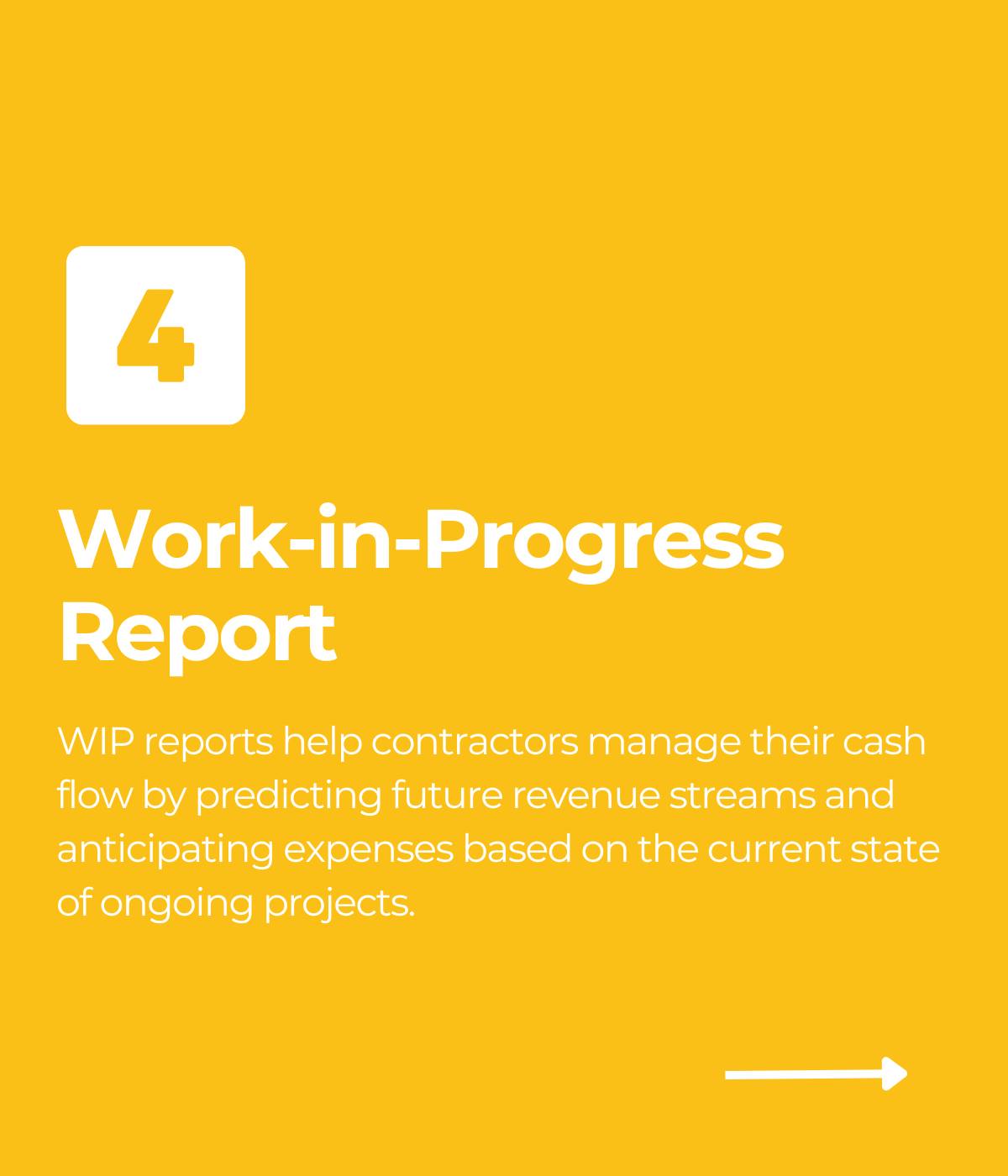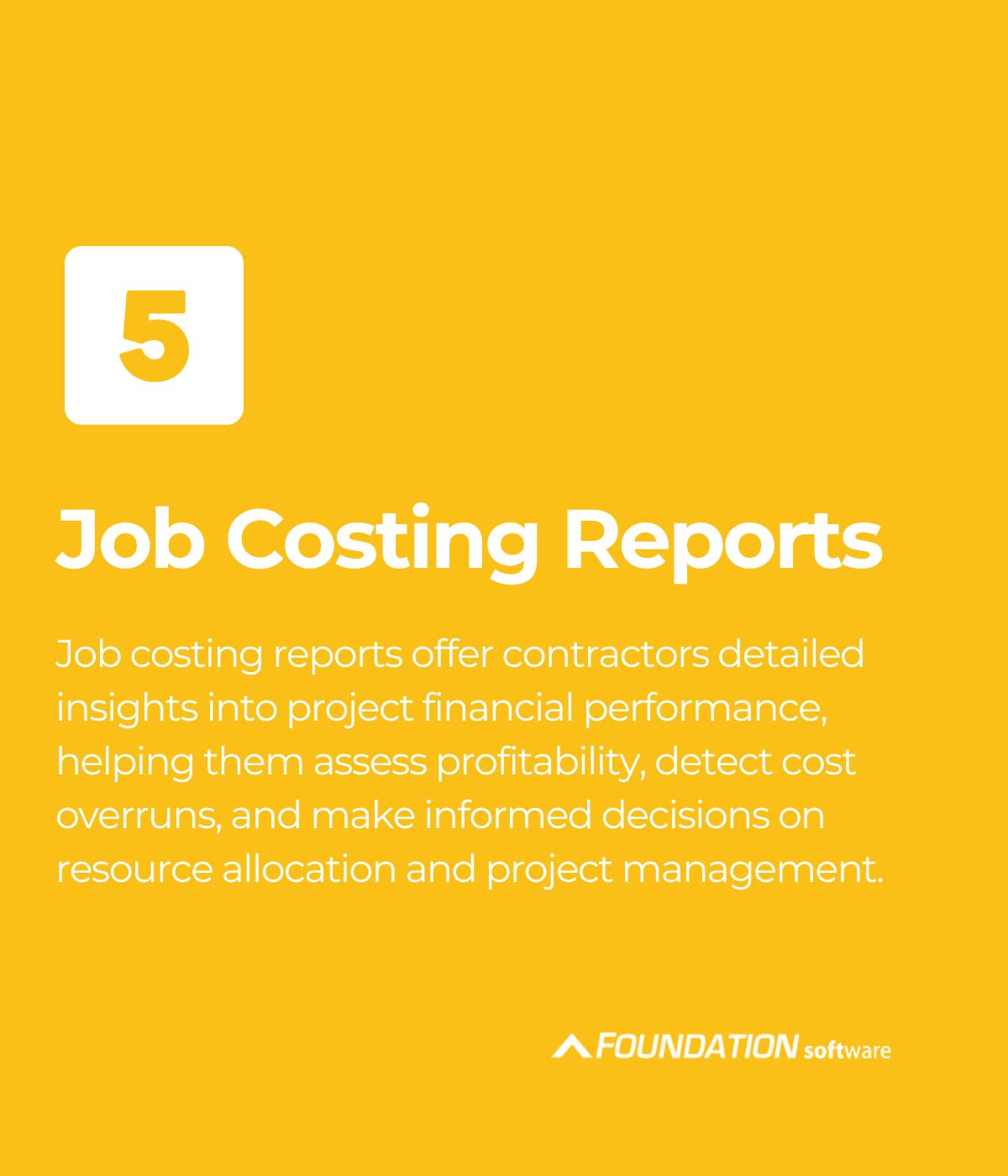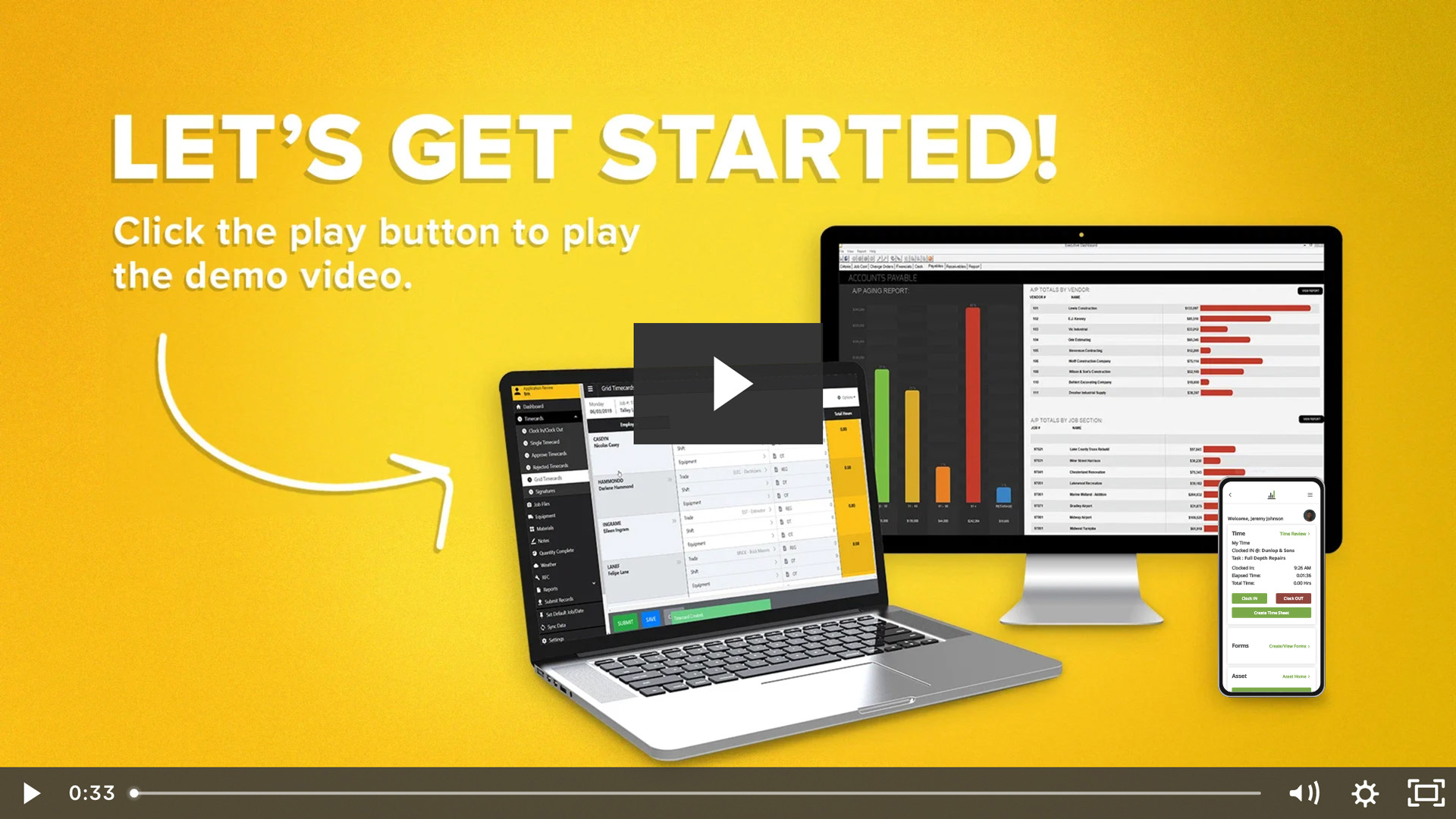
In construction, smooth project billing is essential because it’s how contractors get paid. The billing process also allows you to track project expenses and invoice clients accurately. However, with various billing options available and multiple projects going on at once, managing paperwork and spreadsheets can quickly become overwhelming.
Whether you’re new to construction or a seasoned general contractor, subcontractor or construction management team member, getting paid on time is crucial. Late payments are not only a problem for you financially it but can also stall project progress. According to the construction payment report by Rabbet, 86% of general contractors say payment delays directly impact deadlines.[1]
However, there is a solution to reducing late payments. Understanding the construction billing process and how to manage it effectively ensures you get paid in full and on time. Let’s break down the steps involved in successful construction project billing.

Key Takeaways:
- While securing financial compensation is a major part of the billing process, organized construction project billing is important to maintain cash flow.
- The construction project billing process involves a series of steps to ensure accurate and timely payments are received.
- Many different billing methods in the construction industry take many different forms, each will affect your cash flow and decision-making in distinct ways.
- Construction accounting software can be a great way to simplify the billing process .
The Purpose of Construction Project Billing
Construction project billing is a fundamental financial tool for contractors. While securing financial compensation is a major part of the billing process, there are other reasons why organized construction project billing is so important. Construction project billing can also:
- Maintain Cash Flow: Timely payments are essential for maintaining a healthy cash flow because construction projects often require significant upfront investments in labor and materials.
- Billing ensures a steady stream of income to cover these costs, continue operations and meet financial obligations.
- Track Project Progress: The billing process can also help track project progress. By linking invoices to specific milestones or deliverables, the contractor and the client can see how far the project has advanced while facilitating informed decision-making.
- This documentation can also serve as important records for future projects.
- Provide Cost Control: Detailed and accurate billing allows for better cost control. By monitoring expenses throughout the project and comparing them against initial estimates, the contractor can identify potential cost overruns and take corrective actions.
The Construction Project Billing Process
The construction project billing process involves a series of steps to ensure accurate and timely payments are received.
1. Contract Agreement:
Before you break ground, finalize the contract outlining:
- Timeline: This includes any important project milestones and specific client requirements.
- Payment Terms: This includes details about progress billing, whether you’ll be paid based on completed work stages, project milestones or a single lump sum at the end.
2. Initial Project Setup:
With the contract set, organizing the next stage includes:
- Budget Breakdown: Create a detailed budget for the entire project.
- Cost Tracking: Assign cost codes to different expense categories to easily track how much is spent.
- Billing Schedule: Develop a plan for when you’ll submit invoices throughout the project, aligning it with project milestones.
3. Work Progress and Documentation:
As the project progresses, it is crucial to track progress by keeping detailed records like:
- Daily Logs: Document the work completed, materials used and number of labor hours spent.
- Progress Reports: Update reports regularly to show the percentage of work finished.
4. Preparing the Invoice:
After the billing period, an invoice can be completed. This will include:
- Work Completed Value: Calculate the value of the work you finished during that period, based on the agreed-upon terms in the contract.
- Material and Labor Costs: Include the cost of all materials delivered and labor performed.
- Retainage: If the contract includes a retainage clause or a percentage of payment withheld until project completion, deduct that amount from the total.
5. Supporting Documentation:
Include additional documents to your invoice to support your amounts:
- Approved Change Orders: Include any approved changes to the original contract that affect the project cost.
- Lien Waivers: Provide lien waivers from subcontractors and suppliers, guaranteeing they’ve been paid and won’t file liens against the project.
- Backup Documentation: Attach timesheets, material receipts and subcontractor invoices as a backup for your charges.
6. Submitting the Invoice & Payment Processing:
The completed invoice will be submitted to the client according to the agreed-upon schedule. The client will then review the invoice for accuracy, comparing it to the contract and progress reports.
Once approved, the client processes the payment based on the agreed-upon payment terms. The payment will be received to distribute funds to subcontractors and suppliers as needed.
7. Record Keeping:
Maintaining a detailed record of all submitted invoices and payment status updates is crucial. Continuously update all project financial reports to reflect what has been billed and collected.
8. Address Discrepancies:
If there are any disagreements about the invoice amount, address the discrepancies quickly. It may be necessary to submit a revised invoice with the agreed-upon adjustments.
9. Final Payment and Project Closeout:
Upon project completion, submit a final invoice for any remaining balances due. Once the project is accepted, request the release of any retained funds. Be sure to provide all required closeout documentation like final lien waivers, warranties and as-built drawings.
Different Construction Project Billing Methods
Since billing methods in the construction industry take many different forms, it’s crucial to understand how different contracts operate. Different billing methods will affect your cash flow and decision-making in distinct ways, making them an important part of your construction accounting process.
Unit Price Billing
Unit price billing is a way for contractors to get paid based on the amount of work they complete, rather than a single lump sum for the entire project.
- Breakdown by Unit: The project is broken down into measurable units, like square footage of flooring installed, number of windows replaced or cubic yards of concrete poured.
- Clear Costs: Each unit has a pre-determined price that includes labor, materials, equipment and profit for the contractor. This gives the client a clear picture of the cost for each part of the project.
This method is particularly useful for large projects with many different components, or projects where the exact number of materials needed is difficult to estimate upfront.
Since the price per unit is fixed, additional units can be easily added if needed.
Although this method offers transparency and flexibility, it also requires careful planning and accurate record-keeping.
Unit price billing requires contractors to factor in all costs and a profit margin when setting the price per unit completed units.
AIA Progress Billing
AIA progress billing allows contractors to receive payments throughout a project. The project is divided into stages or milestones. Once a milestone is reached, the contractor submits an invoice for a percentage of the total project cost.
Many contractors use AIA-style progress billing for its standardized approach. With this billing method, comes two key forms:
- G702 Application and Certificate for Payment: Outlines project details like parties involved, timelines, contract amount, past payments and current balance due.
- G703 Continuation Sheet: Provides additional details to support the claims made in the G702.
These forms differ from regular invoices, instead, they act as payment applications requesting a specific amount based on completed work.
Using the AIA billing structure summarizes project progress and highlights that payment is due when work is completed. Other key details include:
- Total project cost
- Retainage
- Total billed to date
- Current completion percentage
- Remaining balance due
AIA progress billing helps to ensure clarity and reduces errors as contractors receive their payments as the project progresses, which can improve cash flow.
Fixed-Price Billing
Fixed-price billing, also known as lump-sum billing, is a common approach where the contractor and client agree on a total project cost before work begins.
Since clients have clear visibility into the overall project expense from the start, this method eliminates budgeting surprises later on.
Fixed-price billing can be extremely beneficial for the client. The method typically protects clients from cost overruns unless changes to the project scope are agreed upon through change orders.
However, this method requires contractors to meticulously estimate all project costs, including labor, materials and equipment, to create a comprehensive budget and set a competitive price.
Once a price is agreed upon, the contractor completes the project within that budget.
It can also be extremely beneficial for contractors as it offers:
- High Profit Margin: If the contractor accurately estimates costs and manages the project efficiently, they can earn a higher profit margin by completing the project under budget.
- Streamlined Bidding Process: Fixed-price billing simplifies the bidding process for contractors, as the total project cost is presented from the beginning.
- Increased Control: Fixed-price billing gives contractors more control over their profitability. They can optimize their pricing strategy by leveraging historical data and creating accurate estimates.
Because this method hinges on creating accurate project estimates, the only way to avoid financial losses is if costs are estimated correctly. This means that any changes to the project scope through change orders will typically result in adjustments to the final cost.
Time & Material
Time and material (T&M) billing is a construction billing method where the client is charged for the labor hours spent on the project and the materials used, plus a markup for the contractor’s profit.
The contractor and client will agree on hourly labor rates, material cost markups and the project’s outcome beforehand. This allows the contractor to invoice the client for all hours worked and materials used throughout the project.
T&M billing is ideal for projects that require changes to be made quickly without complex contract renegotiations, as it allows clients to add or remove features as needed. T&M billing is well-suited for any projects with:
- Uncertain scopes
- Unforeseen changes
- A high degree of client input
Because clients have greater visibility into project costs, they can see exactly what they’re paying for in labor and materials. This allows contractors to minimize the risk of underestimating project costs upfront as they can adjust labor hours as needed.
This also allows for quicker invoicing as rates are pre-agreed and only the actual hours and materials used need to be tracked.
However, with T&M billing comes important considerations for contractors and clients. The final project cost can often be difficult to predict for clients, leading to potential concerns about budget overruns.
For T&M billing, accurate time tracking is crucial to ensure fair billing and project profitability.
Cost-Plus Billing
Cost-plus billing is a construction billing method where the contractor gets reimbursed for all project expenses such as materials, labor, equipment and subcontractors fees.
Included with this is a predetermined percentage fee for the contractor’s profit.
Cost-plus billing is well-suited for projects with:
- A high degree of uncertainty
- A constantly evolving scope of work
- A high level of client input and control
The contractor will pay for all project costs upfront and then invoice the client for the total amount spent, including their profit markup. This method allows for adjustments without complex contract renegotiations.
For contractors, there can be many benefits to cost-plus billing, including:
- Reduced Risk for Contractors: Contractors are not responsible for absorbing cost overruns due to unexpected material or labor increases. Instead, they bill the client for the actual costs incurred.
- Increased Flexibility: Both parties can adjust the project scope as needed.
- Potential for Budget Control: A Guaranteed Maximum Price (GMP) clause can be included in the contract, setting a cap on total project spending and helping clients manage their budget.
However, with cost-plus billing, there are some important considerations. Since the final cost is undetermined upfront, clients may face unexpected budget increases, especially if the project scope expands significantly.
Ways to Simplify the Construction Project Billing Process
An efficient construction billing process is essential for contractors to keep a project on schedule and budget.
- Use Construction Accounting Software: Construction accounting software can automate tasks like generating invoices, which can improve accuracy and save you time. With automated document routing, you can review, revise and route invoices across your team’s workflows.
- The system also acts as a well-organized recordkeeping system for all project documents to ensure accurate billing.
- Most software also features an advanced reporting tool that allows contractors to obtain data easily so you can calculate labor burden, job costs, rates, trades and more.
- Automated reporting can also provide a clear breakdown of project costs and track expenses easily to maintain accuracy.
- Clear Communication: Maintain open communication with the client regarding billing. Discuss any specific requirements they have upfront to avoid delays.
- Timely Submissions: Submit invoices promptly according to the agreed-upon payment terms to ensure a steady cash flow for your business.
Improve Your Construction Project Billing Process with FOUNDATION®
Construction project billing can be a complicated process, but understanding the ins and outs can help you manage it successfully. Knowing the steps to take throughout the project can make it easier to assess if you’re on a profitable track or not.
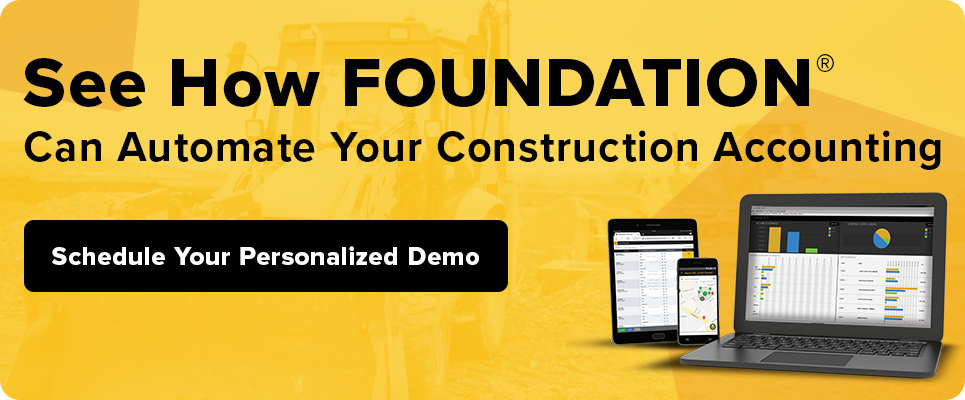
There is no one-size-fits-all for construction progress billing. So, understanding each type of billing method can ensure you select the right kind for each project, allowing you to take control of your finances and manage your cash flow more efficiently.
Simplifying the billing process can be accomplished with the help of construction accounting software, like FOUNDATION. We offer formatted billing estimates and contract invoices for AIA, unit price, time & material billing and so much more.
With direct integration into your job costing structure, you can guarantee a streamlined workflow and get paid on time. Talk to a specialist today to learn more about FOUNDATION.
[1] 2021 Construction Payments Report Highlights. Rabbet. (2021b, December 3). https://info.rabbet.com/2023ConstructionPaymentsReport.html
Share Article
Keep on current news in the construction industry. Subscribe to free eNews!
Our Top 3 YouTube Videos
Learn about our software more in depth with product overviews, demos, and much more!
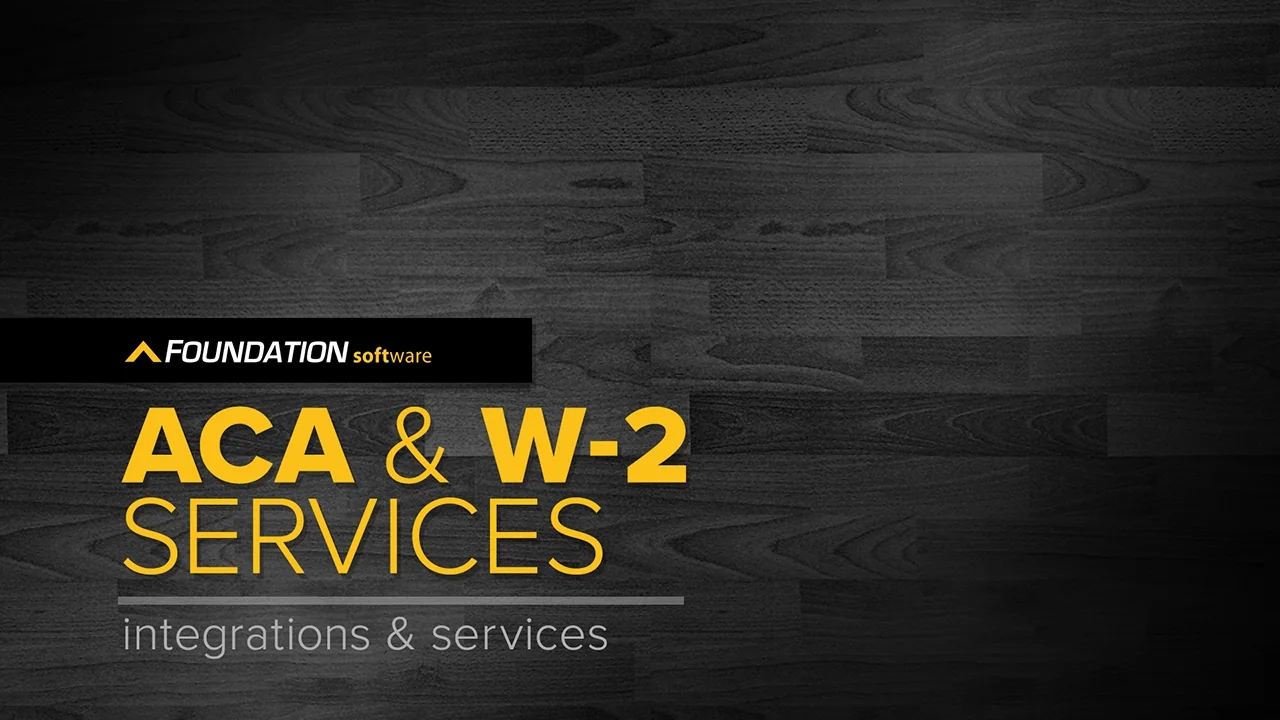
Our ACA reporting & e-filing services include official 1094-C and 1095-C IRS reporting, optional e-filing (no applying for a TCC code required), mailing to your employees and experienced support to help you.

There are plenty of reasons to make FOUNDATION your choice for job cost accounting and construction management software — just ask our clients!
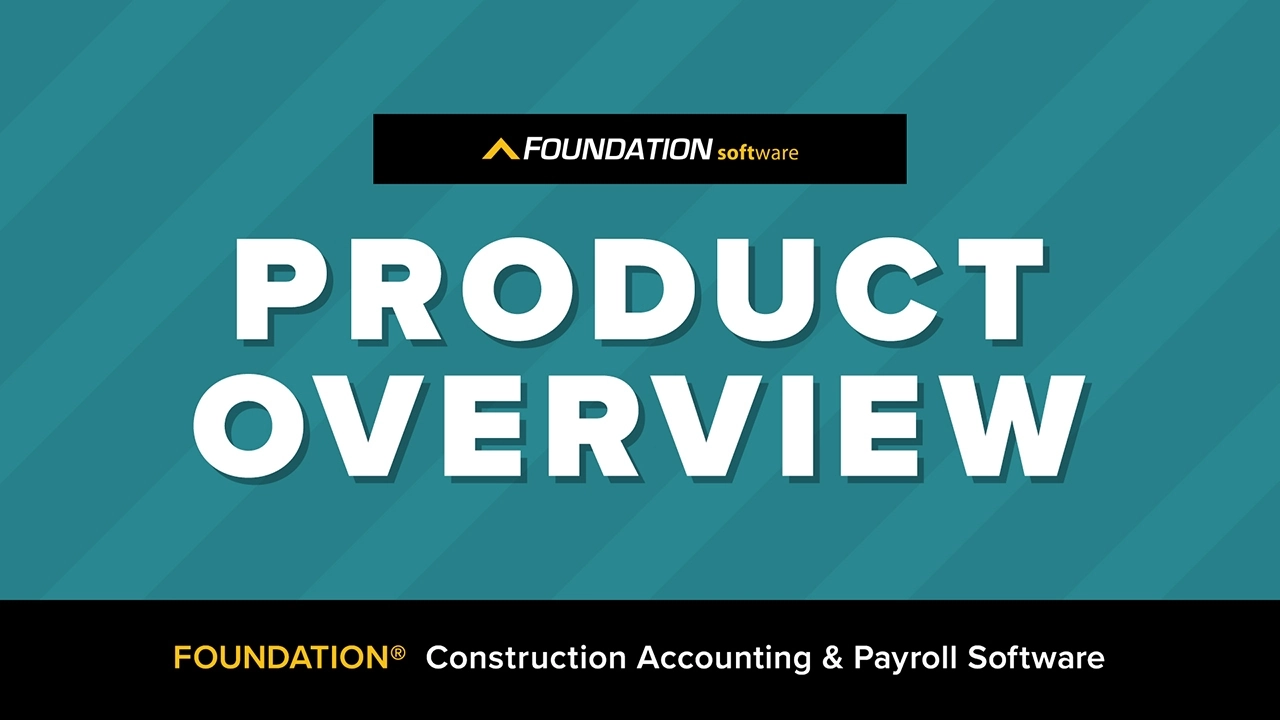
From job cost accounting software, to construction-specific payroll. Get an overview on your next all-in-one back-office solution.



